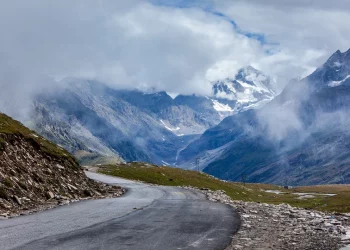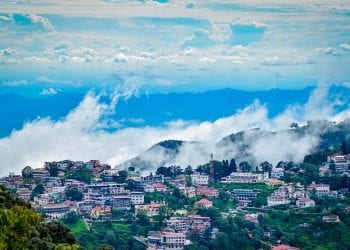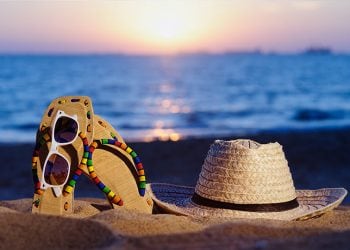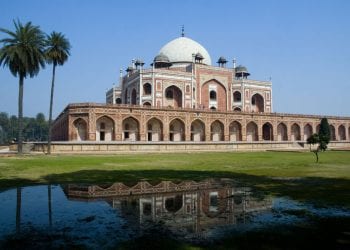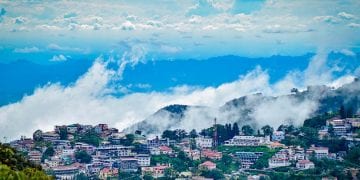Galdan Namchot- Ladakh
Ladakh is one of the most colorful and vibrant destinations in India. Many people know about the scenic surroundings and hospitable people of Ladakh, but Ladakh is also home to some exciting festivals. The Galdan Namchot festival in Ladakh is celebrated to commemorate the birthday and the Buddhahood of the Tibetan saint-scholar, Tsongkhapa. He was the founder of the Gelukpa School that preached Tibetan Buddhism during the 14th century. The festival is celebrated with a lot of lights and colors here, and all the monasteries, public and residential buildings are lit up. This festival marks the starting of the New Year celebrations in Ladakh that goes on till the Dosmoche festival. During this festival, the air of Ladakh is filled with the aroma of delectable cuisines that are prepared as a part of the celebrations. Ladakhis prepare scrumptious traditional dishes like ‘thukpa’, and people meet and dine with each other. People also present each other with the traditional ceremonial scarf called ‘Khatak’.
Since Ladakh follows the Tibetan lunar calendar and Galdan Namchot festival falls on the twenty-fifth day of the tenth month Tibetan calendar, every year the festival falls on different dates of the Gregorian calendar. However, it almost always falls in December. So, if celebrating a colorful and energetic Ladakhi festival excites you, then you should plan a visit to this miraculous state in December.
If you want to experience the various hues and colors of Ladakh, you should visit it during the festive period. Festivals are a time of merry-making when the true heritage, beliefs, and values of a place and its people shine. The same is the case with Ladakh. It is commonly believed that Ladakh is nothing but a barren wasteland. But you need to visit this place to experience its charm to the fullest. Ladakh is like no other place on earth. People here celebrate the various facets of life and do not allow the cold and dry weather to dampen their enthusiasm. An epitome of nature’s beauty, traveling to Ladakh during a festive time is like the cherry on the top of a yummy Ladakhi sundae. You should pay a visit to this marvelous destination during the festive season to truly understand and appreciate the spirit of the people. Festivals are times when the entire silent town of Leh transforms into a melting pot of culture, color, festivity, musicals, dance performances, and recitals by various tribes. Being here at the time of any of the festivals is a great opportunity to witness a celebration that is bound to leave you mesmerized. It also presents a perfect opportunity to learn more about the rich Buddhist culture here; the glory of which I believe is prominent in all of the festivals of Ladakh.
Festivals in Ladakh are organized on the basis of occasions such as birth, marriage, the commemoration of head lamas (who found the monasteries), harvesting, flowering, and Losar or New Year. More festivals are held during winter than summer, but for tourists, there are plenty of festivals celebrated in peak tourist season as well. Open courtyards of the monasteries become the venue of these festivals where recitals, prayers, masked dances, folk songs are performed by monks in vibrant and colorful silk garments. This is the time when spirituality, entertainment, enjoyment lend Ladakh a whole other vibe. One such important festival here is the Galdan Namchot Festival.
History of Galdan Namchot

Just like every festival in India, the Ladakhi festival of Galdan Namchot also has a fascinating bit of history and folklore attached to it. According to legend, it is believed that Je Tsongkhapa was born in Amdo, Tibet sometime in 1357. Owing to his wisdom, he was one of the most revered men of his time. Je Tsongkhapa, whose ordained name was Losang Dragpa, was a great 14th century Tibetan Buddhist Master who promoted and developed Kadampa Buddhism. It is said that his appearance in Tibet was predicted by Buddha himself. Je Tsongkhapa is a prominent figure here. He patiently taught the Tibetans everything they needed for their spiritual development, from the initial step of entering into a spiritual practice through to the ultimate attainment of Buddhahood. It was said that his era ushered in the golden age of Tibet where thousands of Tibetans were inspired by his immaculate example of pure moral discipline, compassionate way of life, and profound, liberating wisdom. Je Tsongkhapa showed a perfect example of how to build the foundation for the spiritual path, how to progress on that path, and how to complete it. First, he studied the entire Dharma of Sutra and Tantra by relying sincerely upon his spiritual guides, and then he put all this knowledge into practice and demonstrated the attainment of all the realizations from relying upon the Spiritual Guide up to the Union of Buddhahood. The festival of Galdan Namchot is observed to celebrate the birthday and the attainment of Buddhahood of Je Tsongkhapa. It also denotes the start of the new year which falls following five days of the Galdan Namchot celebration and proceeds till the Dosmoche celebration in February.
Galdan Namchot Festival- The Celebrations
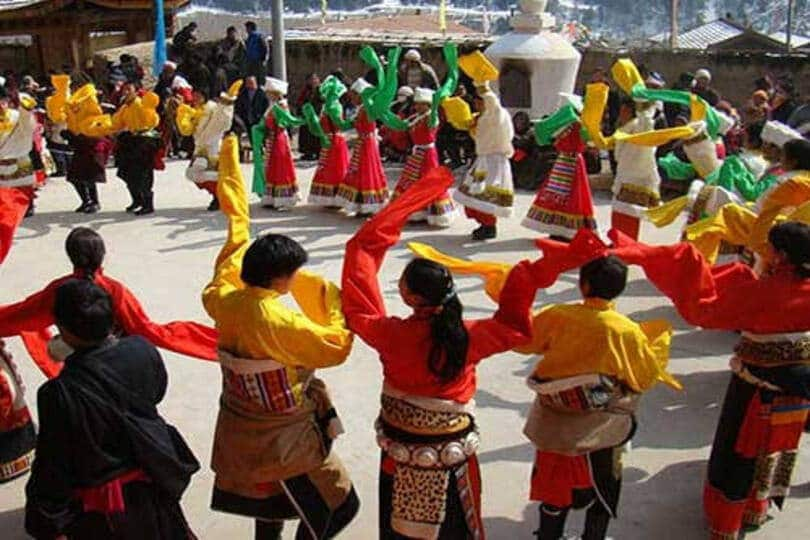
As mentioned above, the festival commemorates the memory of Tibetan saint-scholar, Tsongkhapa. To pay respect to the saint, all buildings in Ladakh including monasteries, houses and public buildings are lit up. This festival is celebrated all over Ladakh in the month of either November or December and the festivities are spread over two days. During this festival, people also light butter lamps, which symbolizes the victory of good over evil. Food is an important part of the celebration, and people prepare traditional cuisines such as vegetable and meat thukpa, momos, and the famous Ladakhi butter tea. The state comes alive with music, dance, and dramas that are essentially performed by the monks who dress up in colorful robes.
Ladakh and its Festivals

The picturesque land of Ladakh truly comes alive during this festival. To many, Ladakh is just a land enveloped by snow-covered peaks and daunting passes. However, very few people are aware of the customs and festivals of Ladakh that are quite appealing and alluring. Besides the enchanting Galdan Namchot festival, Ladakh celebrates many other festivals with equal zeal and fervor. If you want to explore the spirit of Ladakh to its fullest, then you should visit this beautiful Indian state when it is celebrating one of its amazing festivals.
Some of the vibrant festivals of Ladakh are:
Losar: A Celebration to Welcome the New Year
Losar is considered to be the most important festival in Ladakh. This festival marks the beginning of the new year and is celebrated with enthusiasm in a colorful manner. This exciting festival features a blend of cultural events, rituals, holy fire, chants, recitals and performances in vibrant robes. The stage fight between good and evil and Ibex deer dance are the noted attractions of all. This festival does not fall on a specific date as it is based on the Lunar calendar but it is usually observed in December and is followed by a month-long celebration, which sometimes last even till March. People from all over Ladakh take part in this festival; of all age groups and tribes. Pictures of Alpine Ibex are painted on the walls and a fire procession is organized by the locals to bring in good luck and prosperity.
Sindhu Darshan- Celebrating the Existence and Blessings of the River Indus
Sindhu Darshan is traditionally celebrated on the Hindu Festival of Gurupurnima. Through this festival, the natives commemorate the Indus River as they believe that the river plays a key role in maintaining harmony and unity among various ethnic groups and communities of India. Not only this, the wonderful festival of Sindhu Darshan also pays a heartfelt tribute to the Indian soldiers who put their lives at risk while protecting our nation and its values. Senior Lamas commence the festival on the first day by offering Buddhist prayers followed by a reception for all participants on the banks of Indus at Shey. A bonfire is also lit at night on the banks. Cultural programs and prayers follow on the 2nd and 3rd day as thousands of people gather to experience the celebrations.
How to Reach
By Air: The nearest airport is the Kashuk Bakula Rimpochee Airport which is located in Leh. This airport has very good connectivity with other Indian cities like Delhi, Pune, Mumbai, and Chandigarh. After deboarding your flight, you will have to hire a cab to reach your respective destination.
By Train: The nearest railway station to Ladakh is in Tawi, Jammu and Kashmir. However, after this, you still need to cover a distance of around 800 km for which you may have to travel via bus or take a flight to Leh from Jammu.
By Road: Being one of the three highest mountain passes in the world, Leh, Ladakh is already a very popular travel destination among the bikers. There are mainly two routes to Leh- one starts from Srinagar and goes through Dras and takes you to Leh, and the other one starts from Manali and takes you to Leh.
Ladakh is a land of great heritage, culture, and festival. If you plan a trip to Ladakh, make sure that you are there to witness the wonderful festival of Galdan Namchot.
Recent Posts
Top Picks
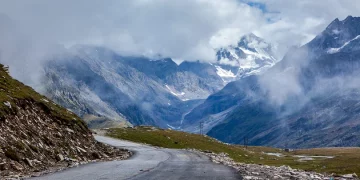
- OYO
 15 April, 2024
15 April, 2024 - Cultural Tour

- OYO
 15 April, 2024
15 April, 2024 - Cultural Tour

- OYO
 15 April, 2024
15 April, 2024 - Cultural Tour

- OYO
 15 April, 2024
15 April, 2024 - Cultural Tour

- OYO
 15 April, 2024
15 April, 2024 - Cultural Tour

Please rotate your device
Please go back to portrait mode for the best experience




 April 15, 2024
April 15, 2024 